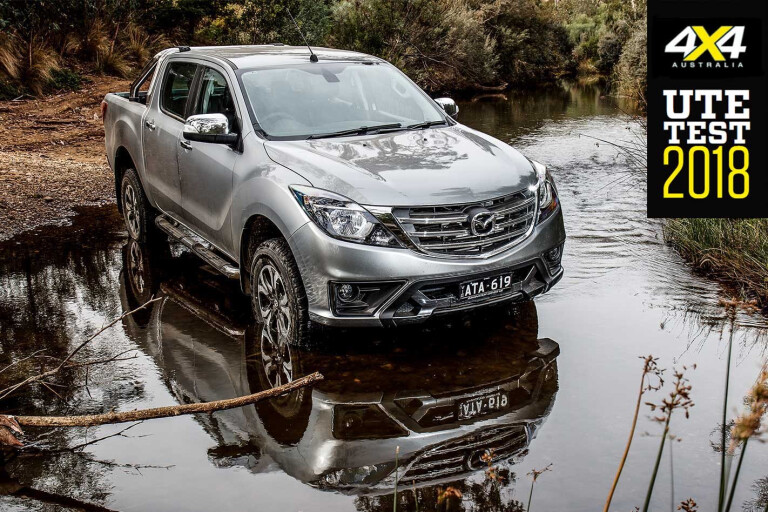
THIS is Mazda’s new-look 2018 BT-50, complete with a front-end styling treatment that, quite unusually, is exclusive to Australian models. It comes with extra equipment, especially for the entry-level XT, but also includes the addition of the popular smartphone apps across all models. This refresh follows the MY16 upgrade that also saw a front-end restyle and equipment additions.
This ongoing restyling of the BT-50’s front-end says what every Mazda dealer in the country was thinking when the BT-50 and the co-developed Ford Ranger first arrived here in late 2011: namely, “Bugger… wish our ute looked like their ute!”
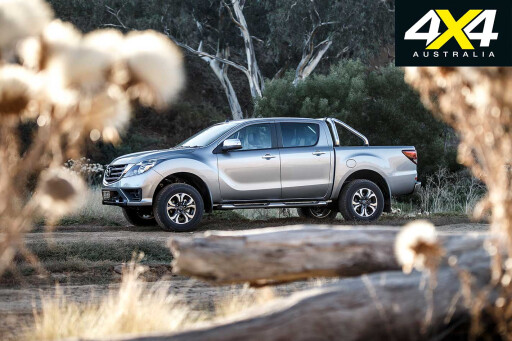 Despite being as-good-as-mechanically identical when they both first arrived and still very similar following their respective MY16 upgrades, the BT-50 has never sold in the numbers of the Ranger despite being less expensive. Right now, for example, the Ranger 4x4 outsells the BT-50 4x4 about four to one.
Despite being as-good-as-mechanically identical when they both first arrived and still very similar following their respective MY16 upgrades, the BT-50 has never sold in the numbers of the Ranger despite being less expensive. Right now, for example, the Ranger 4x4 outsells the BT-50 4x4 about four to one.
For Mazda, the 2011 BT-50 represented a design about-face, as up until this time (and even with the first ute to carry the BT-50 nameplate) Mazda designed and developed its own light commercials, which Ford then rebadged. In this case it was Ford leading the design and development and Mazda following on.
WHAT YOU GET
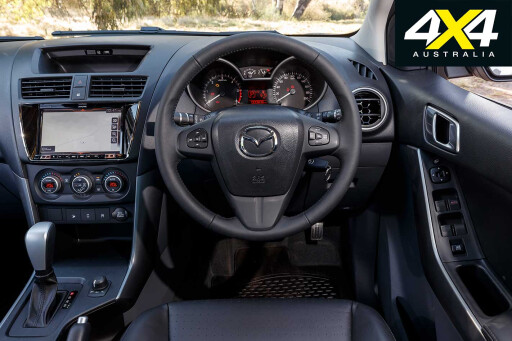 ALL BT-50 dual-cab 4x4 utes have six airbags, a reversing camera, Trailer Sway Control, a seven-inch (or bigger) touchscreen, Apple CarPlay and Android Auto, and a rear locker.
ALL BT-50 dual-cab 4x4 utes have six airbags, a reversing camera, Trailer Sway Control, a seven-inch (or bigger) touchscreen, Apple CarPlay and Android Auto, and a rear locker.
The top-spec GT, as tested here, has leather, eight-way electric adjust on the driver’s seat, a chrome sports bar and a tub liner in addition to sat-nav, an eight-inch touchscreen, auto headlights and wipers, and the 17-inch alloys it shares with the mid-spec XTR.
POWERTRAIN AND PERFORMANCE
AS WITH many things, the BT-50 shares the same basic engine as the Ranger, namely its 3.2-litre inline five-cylinder diesel, which is a major positive in a market dominated by smaller capacity four-cylinder engines. Bigger capacity always means more easily developed torque, which is always a good thing when there’s work to be done.
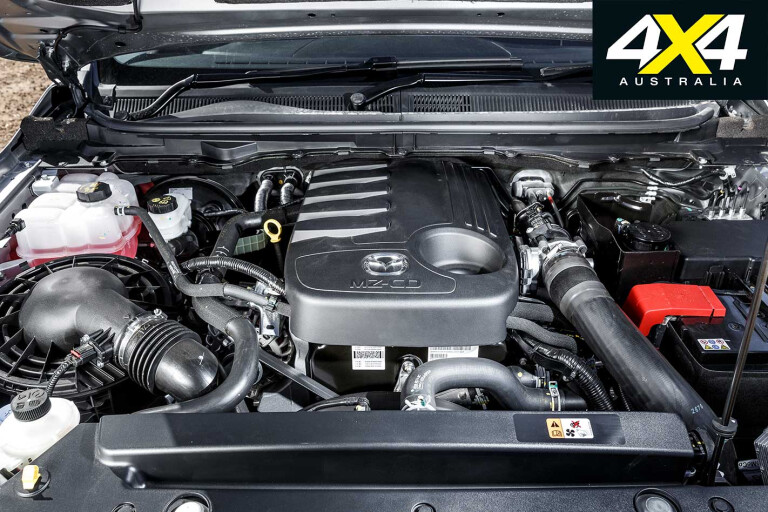
Significantly, for the respective 2016 model, Ford carried out a number of upgrades not adopted by Mazda. While both engines still claim the same maximum power and torque (147kW and 470Nm) the Ford achieves its 470Nm earlier and produces it for longer.
This BT-50’s engine is still low-revving, lazy (in a good way) and generally effortless; although, it’s not quite as flexible as that of the Ranger. It’s also a little noisier than the Ranger and one of the gruffer engines here. But, aside from a being a little lumpy at idle, it’s also smooth running given that an inline five is inherently smoother than an inline four, despite having an odd number of cylinders.
The engine is also well served by its six-speed automatic (originally a ZF design) transmission and final drive gearing that’s tall and relaxed, without being too tall that the engine struggles to hold top gear at highway speeds on undulating roads.
ON-ROAD RIDE AND HANDLING

LIKE the Ranger, the BT-50’s handling characteristics are more about stability than agility and come with well-sorted suspension that’s well-matched front to rear, even when unladen. As with the Ranger, the BT-50 feels like a big ute mainly because it is.
One key difference to the otherwise similar Ranger is that the BT-50 has conventional hydraulically assisted steering rather than electric power steering (EPS) that the Ranger adopted as part of its 2016 mid-life upgrade.
The BT-50’s steering at highway speeds still offers good feel, but you notice the extra effort at parking speeds compared to the very light steering effort of Ranger. The counter argument is that hydraulically assisted steering is a well-proven, robust system, which is the reason given by Toyota in not adopting EPS with its latest generation Hilux.
OFF-ROAD
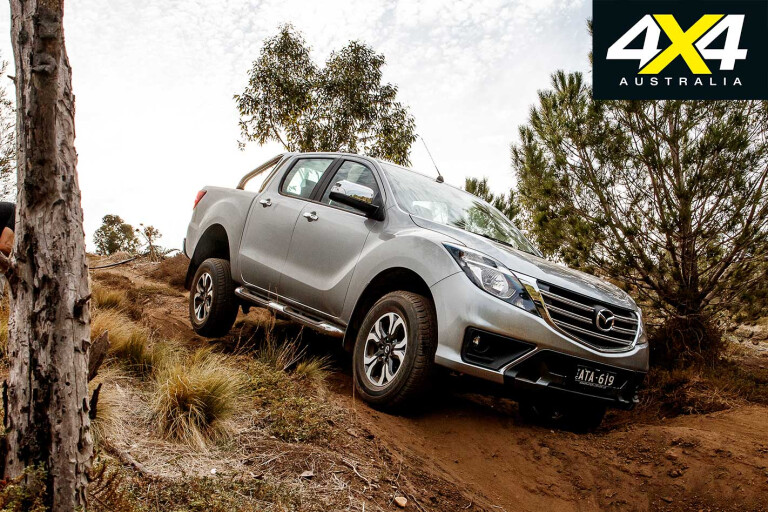
IF THE engine upgrades and EPS are key features that distinguish the current BT-50 from the Ranger, so too is the way the chassis electronics, namely the electronic traction control, work on the two.
When the driver engages the rear diff lock on the Ranger, the ETC remains active on the front wheels. With the BT-50, however, engaging the rear locker cancels ETC completely. This upgrade to the Ranger in 2016 was not adopted by Mazda.
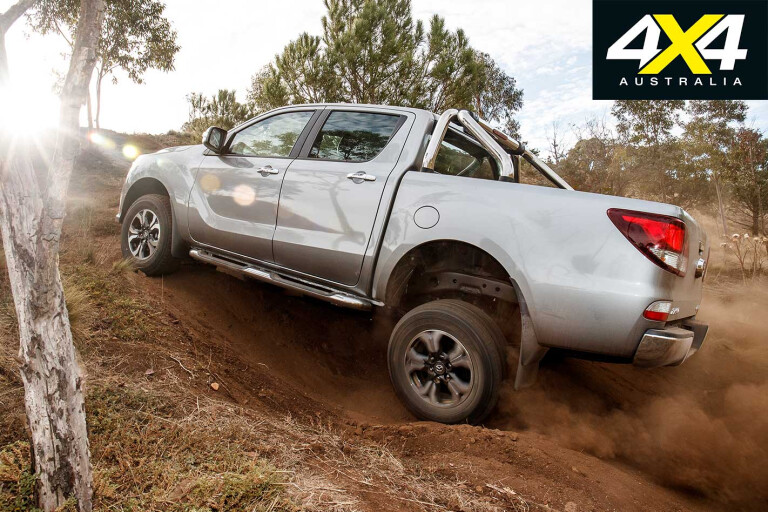
The wash-up here is that engaging the rear locker on the BT-50 doesn’t necessarily help in difficult off-road conditions. On our gnarly and steep set-piece hill, for example, the BT-50 got to the top without the locker but didn’t make it with the rear locker engaged.
Thanks largely to its generous wheel travel (the same as the Ranger), the BT-50 is still amongst the more off-road capable utes here, even if it’s a notch down from the three top-tier performers: Hilux, Amarok and Ranger.
LOAD CARRYING
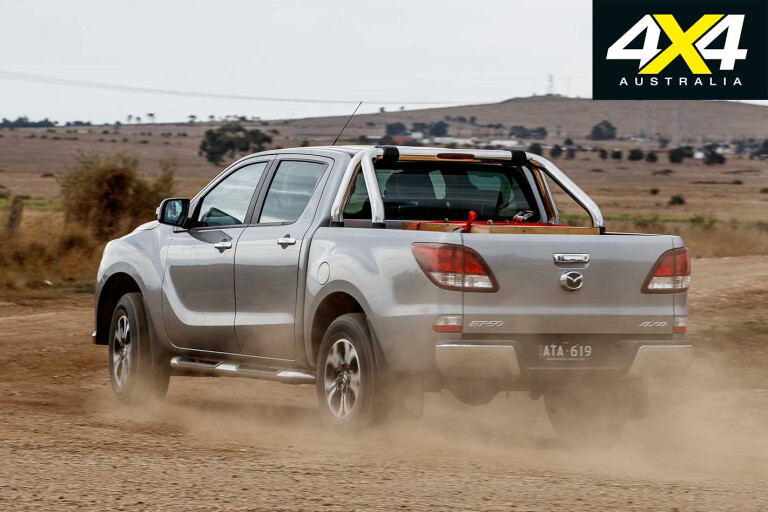
FOR all the same reasons the Ranger is a very good heavy-duty work ute, so is the BT-50. With our test 900kg payload onboard, the BT-50 was largely unfazed in terms of chassis stability and engine performance.
Likewise, when tested with 3500kg tow weight hooked behind in our previous load and tow test, the BT-50 was one of the best performers. The BT-50 falls a little short of the Ranger with its noisier and slightly less responsive engine.
CABIN AND SAFETY
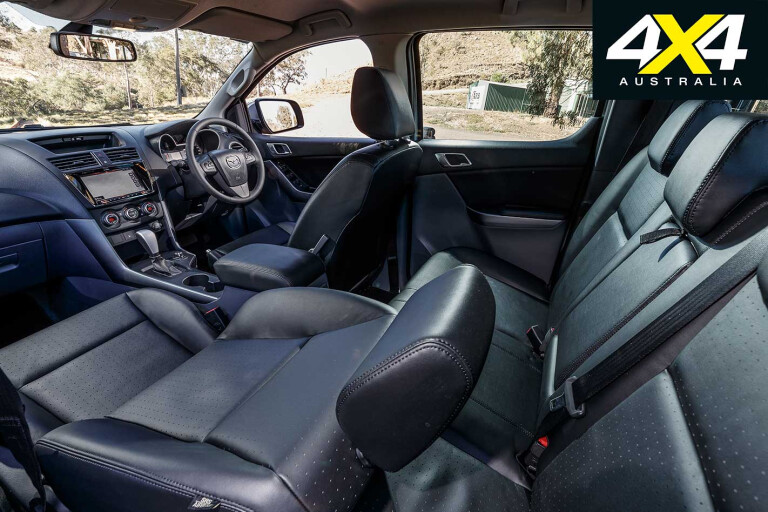
MORE similarities to the Ranger here, with the BT-50 offering a comfortable, spacious and notably long cabin. No ute here has more combined front and rear legroom, and only the Amarok is wider. The bottom-line: if you wish to accommodate five adults, the BT-50 is as good as you’ll get here. Five-star ANCAP safety, too.
On the negative side are no reach adjustment for the steering wheel and no smart key entry and start, even on this top-spec GT model.
PRACTICALITIES
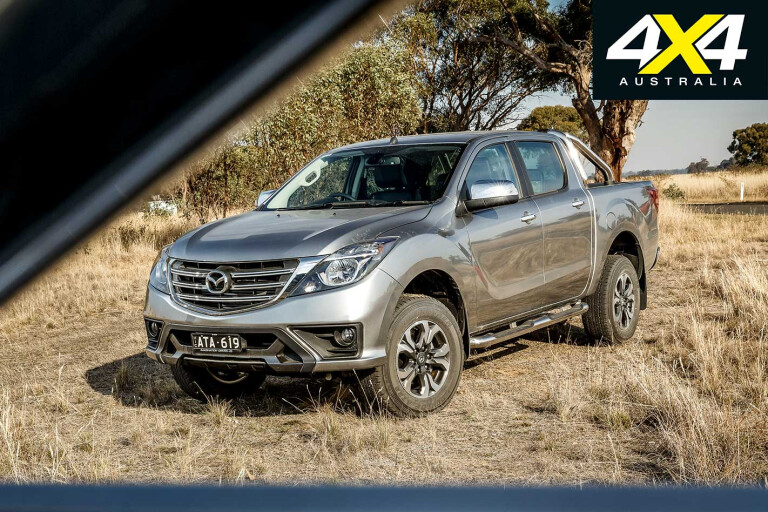
THE commonality with the Ranger means many service parts are interchangeable and are often cheaper when they come in Ford wrapping. There’s also a good range of factory accessories, and the same practical wheel and tyre spec as the Ranger and Hilux.
Like the Ranger, the BT-50 is a little thirsty by class standards; although, the 80-litre tank helps cover for this in terms of fuel range.
Mazda BT-50 GT Specs
Engine: 3.2-litre 5-cyl turbo-diesel
Power: 147kW at 3000rpm
Torque: 470Nm at 1750-2500rpm
Gearbox: 6-speed auto
4X4 system: Dual-range part-time
Crawl ratio: 42.3:1
Construction: Separate chassis
Front suspension: Independent/coil springs
Rear suspension: Live axle/leaf springs
Kerb weight: 2118kg
GVM: 3200kg
Payload: 1082kg
Towing capacity: 3500kg
Towball Download: 350kg
GCM: 6000kg
Fuel tank size: 80 litres
ADR fuel claim: 9.2L/100km
Test fuel use: 12.2L/100km
Touring range: 605km*
*Based on test fuel use, claimed fuel capacity and a 50km ‘safety’ margin
Acceleration and Braking
0-100km/h: 10.8sec
80-120km/h: 7.9sec
100-0km/h: 45.0m
Off-road capabilities
Departure angle: 26.4˚
Rampover angle: 25˚
Approach angle: 28.2˚
Wading depth: 800mm
Ground clearance: 237mm
Mazda BT-50 Prices**
XT: $44,615
XTR: $50,490
GT: $52,490
**Prices do not include on-road costs
The Results
 Results and verdict
Results and verdict
Nine utes, but only one winner...
4X4 Australia Ute Mega Test
 Intro & Contenders
Intro & Contenders
Home of 4X4 Australia’s Ute Test, where we have put all of the popular 4x4 dual-cabs through their paces off-road and on-road.

COMMENTS